Learn About Gemstones
When it comes to gemstones, the possibilities may feel endless. With sparkling cuts and beautiful colors, many gemstones are alluring and set with tradition. We source these gems from vendors that meet the highest possible ethical, labor and environmental standards.
SAPPHIRES

The word sapphire comes from the Latin sapphiru which means blue. Sapphires come in a rainbow of colors from the vibrant blue of the midday sky, to the navy blue of the night sky, yellow reflections of the sun, and the pink of dawn and dusk.
Sapphire is the birthstone for September. It is also a traditional gift for those celebrating 5th or 45th anniversaries. Sapphires are often associated with loyalty and dignity and are a favorite gemstone for royalty.
Sapphires belong to the family of minerals known as corundum. They are among the strongest natural gemstones in existence, second only to diamonds.
The most valuable sapphires are a mid color blue with a concentrated hue which remains constant under all lighting conditions. Sapphires of up to 2 carats are common. Larger sapphires of up to 10 carats are not difficult to find in a variety of colors.
EMERALDS
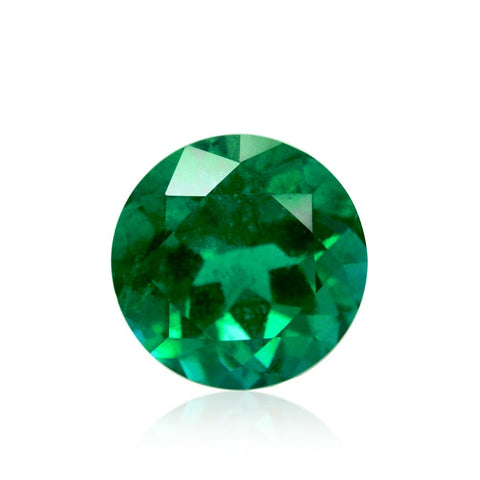
Reflecting the color of spring, emerald is the birthstone for May. It is also a traditional gift for those celebrating 20th or 35th anniversaries.
Emeralds are relatively strong gemstones, registering 7.5 - 8 on the Mohs scale of hardness. While they are fairly resilient to knocks, they can be chipped or ; scratched.
Emeralds are often associated with magic and mystery. The color of nature, they are said to promote a calm and peaceful spirit.
MOISSANITES
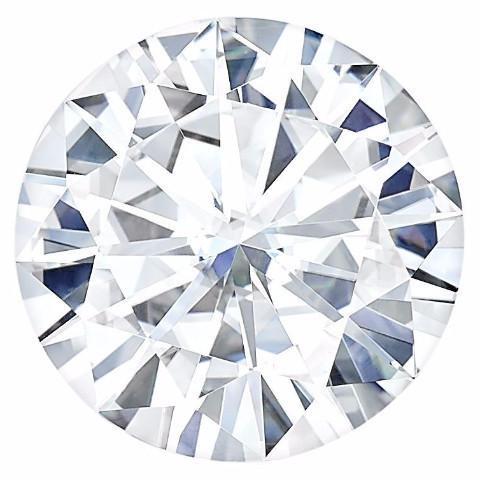
Moissanite, also known as silicon carbide, was first discovered in minute quantities from particles carried to earth by a meteorite 50,000 years ago. It is now available as faceted gemstones in a large array of shapes and sizes. Unlike other brilliant stones that cloud and dull with time, Moissanite is guaranteed to never lose its optical properties. Therefore, it will be every bit as beautiful, fiery and brilliant generations from now as the day you purchase it.
Moissanite is one the most brilliant and fiery gemstones in the world. Possessing fire, brilliance and luster that far surpasses even that of a diamond. Moissanite twinkles and sparkles unlike any gemstone on earth. Composed of carbon and silicon. Moissanite is an alternative to a diamond. They get confused so often because they are practically indistinguishable by the naked eye. In fact, even under a microscope they are rarely different. A gemologist has to have a special tool to determine if a stone is a diamond or moissanite.
MORGANITE

Morganite is the pink to orange-pink variety of beryl, a mineral that includes emerald and aquamarine.
Morganite’s subtle color is caused by traces of manganese. Because morganite has distinct pleochroism—pale pink and a deeper bluish pink—it’s necessary to orient the rough carefully for fashioning. Strong color in morganite is rare, and gems usually have to be large to achieve the finest color.
RUBIES

The word ruby comes from the Latin rubens which means red. Rubies are found in shades of red, from rich darkish red to pigeon blood red and pinkish red. The red hue comes from traces of the mineral chromium. Ruby is the birthstone for July. It is also a traditional gift for those celebrating 15th or 40th anniversaries.
Rubies are extremely strong, registering 9 on the Mohs scale of hardness. They are as resilient as sapphires and only slightly softer than diamonds.
Rubies have been found all over the world, including in Myanmar (formerly Burma), Africa, Australia and the USA. The majority of rubies for sale at Israel.
The most precious rubies are those with a full, rich red color with just a hint of blue tones. Originally, the finest rubies were mined in Myanmar and it is from there that the term Burmese ruby began to describe the finest rubies. Rubies, because of their brilliant red hues, are often related to themes concerning the essence and vibrancy of life. If there is one gemstone that represents the passion of love, it is the ruby.
AQUAMARINE

Named after seawater, aquamarine’s fresh watery hue is a cool plunge into a refreshing pool. Like emerald, aquamarine is a color variety of the mineral beryl.
Aquamarine’s name comes from the Latin for seawater and it was said to calm waves and keep sailors safe at sea. March’s birthstone was also thought to enhance the happiness of marriages. The best gems combine high clarity with limpid transparency and blue to slightly greenish blue hues. Like many beryls, aquamarine forms large crystals suitable for sizable fashioned gems and carvings.
Aquamarine is the birthstone for March and the gem of the 19th wedding anniversary.
ALEXANDRITE
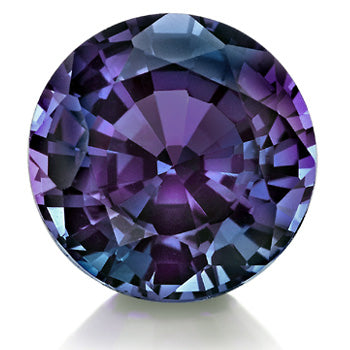
Often described by gem aficionados as “emerald by day, ruby by night,” alexandrite is the very rare color-change variety of the mineral chrysoberyl. Originally discovered in Russia’s Ural Mountains in the 1830s, it’s now found in Sri Lanka, East Africa, and Brazil, but fine material is exceptionally rare and valuable.
Alexandrite is a birthstone for June, along with pearl and moonstone. Alexandrite is also the gem for the 55th wedding anniversary.
This gem provides dramatic proof of how much the light source affects color in gems.
PERIDOT
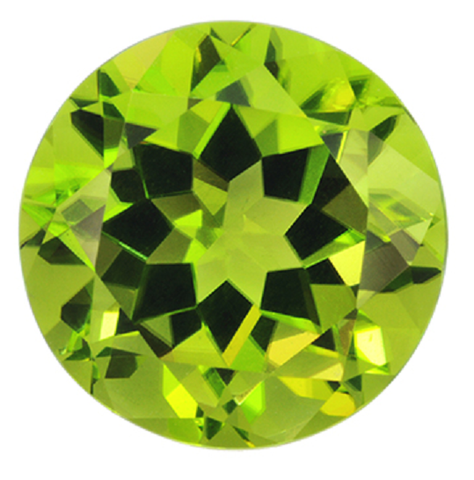
Found in lava, meteorites, and deep in the earth’s mantle, yellow-green peridot is the extreme gem
The ancient Egyptians mined peridot on the Red Sea island of Zabargad, the source for many large fine peridots in the world’s museums. The Egyptians called it the “gem of the sun.” Today this gem is still prized for its restful yellowish green hues and long history. Large strongly-colored, examples can be spectacular, and attractive smaller gems are available for jewelry at all price points.
Peridot is the birthstone for August and the 15th anniversary gemstone.
TOPAZ

Blue is the most popular topaz color in today’s jewelry marketplace. It is sold in a broad range of blue colors, starting from a pale blue with a light tone and saturation, all the way to a deep blue with a moderate to dark tone and saturation.
Blue topaz is very attractive, inexpensive, and a favorite color of the jewelry customer. These characteristics drive the popularity of blue topaz.
Before 1970 most of the topaz in low to moderate price jewelry was yellow to brown in color. Natural topaz with an attractive blue color was rare and very expensive. As a result it was seldom seen in jewelry. Today's blue topaz is a product of gem treatment.
TOURMALINE

Tourmalines have a wide variety of exciting colors with one of the widest color ranges of any gem.
Tourmaline’s colors have many different causes. It’s generally agreed that traces of iron, and possibly titanium, induce green and blue colors. Manganese produces reds and pinks, and possibly yellows. Some pink and yellow tourmalines might owe their hues to color centers caused by radiation, which can be natural or laboratory-induced.
Tourmaline is a birthstone for October, along with opal. Tourmaline is also the gem of the eighth anniversary.
TANZANITE
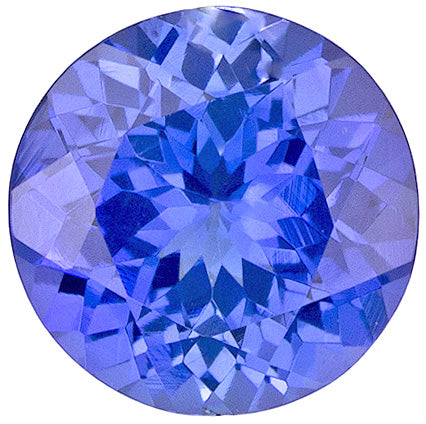
Found in just one place on earth, tanzanite is a relatively recent discovery. Poised between lush blue, vibrant violet, and rich purple, exotic tanzanite is found in only one place on earth, near majestic Mount Kilimanjaro.
Tanzanite is a trade name that was first used by Tiffany and Company for gem-quality specimens of the mineral zoisite with a blue color. Tiffany could have sold the material under the mineralogical name of "blue zoisite," but they thought the name "tanzanite" would stimulate customer interest and be easier to market.
The name "tanzanite" was given because the world's only known tanzanite deposit of commercial importance is in northern Tanzania. The name reflects the gem’s limited geographic origin. The mines are all located in an area of about eight square miles in the Merelani Hills, near the base of Mount Kilimanjaro and the city of Arusha.
Although nearly all of the world’s most popular gemstones have been known and used for hundreds of years, tanzanite was not discovered in commercial quantities until the 1960s. In the short time since then, it has become the second most popular blue gem after sapphire. It is one of a very small number of gems of any color that have been discovered and brought to strong consumer popularity within the past century.
AMORA GEM
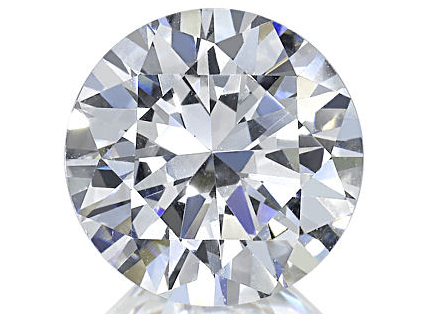
Since most people are familiar with diamond, we can explain Amora Gem by starting with a pure diamond. By taking a pure diamond, which is 100% pure carbon, and then removing every other carbon atom and putting a Silicon atom in instead, we end up with an Amora Gem's atomic composition (50% Carbon, 50% Silicon).
Because Silicon is a larger atom, the 50% carbon atoms have to shift to make room, but after the carbon atoms make room, you now have an Amora Gem.
(Note that to do this and grow an Amora Gem requires very extreme heat. These temperatures are found only around large stars or in extreme growth chambers that create the star-like environment. Diamond itself would vaporize in these star-like conditions which is why Amora Gem was only made available on Earth recently).
The 50% Silicon atom composition is what gives Amora Gem superior fire, brilliance and lustre versus diamond. Silicon is larger than carbon, so it is better able to bend light, and light bending and dispersion (measured as refractive index and dispersion index) is what provides a gem's brilliance and fire.
